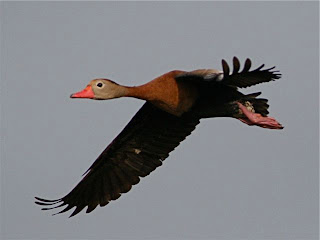 |
| Colima Warbler |
Well, it is finally time to talk about the Colima Warbler. I've been avoiding this bird, which is found in the U.S. only in the Big Bend National Park, in Texas, and only at an elevation of about 7,000 feet, as one climbs up towards Emory Peak...one of the highest in the Chisos Mountains in the southern part of Texas. This is the very northern part of the bird's range, which spreads out into Mexico in equally inaccessible areas.
He is quite shy, and flits about, making him even difficult to spot once you have gotten to him. Unfortunately, I never got to him. The afternoon before, the three of us scrambled up about a fifth of the distance, just to check things out. As we ascended, and I was sweating and panting for breath, I noticed my two comrades hadn't even broken a sweat. They weren't panting any more than if they had walked from your kitchen into the dining room. Not that I didn't already know it, these guys are the hikers from hell..definitely in a different class.
The plan was to get up at about 5 AM, and be on the trail by 6 AM, so as to be in the area of the warbler around 11 AM, when the temperature would be approaching 100 degrees. Throughout my life, I have been known as the "bulldog"...kind of dumb, but never giving up. And so it pained me greatly to back out of this adventure, using my recent knee replacement, asthma, blah, blah, blah..whatever..as an excuse.
The boys made the trip without me, and indeed saw the Colima Warbler. Along the way, they encountered a couple of hikers that only went half the distance, and claimed to have seen the bird.
Just like the Repubulicans, they lied.
 |
| Republican |
Enjoy the Colima Warbler...




















